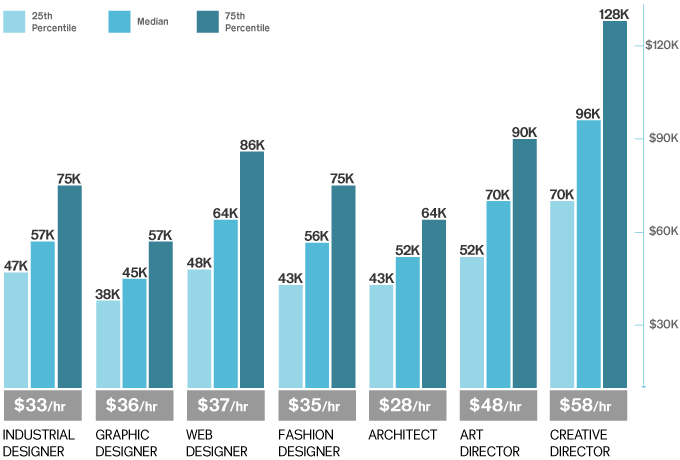

The numbers within the New York City market also present some interesting trends.

Although average wages reported in San Francisco are nearly 8% higher than in New York, rent is actually 16% higher, according to these figures.Īverage annual architectural salaries in the NYC region by firm type. Aside from lower wages, the city’s average rent falls just behind New York City at $2,510 per month for a one-bedroom unit. Boston, on the other hand, seems like a bad bet both ways.
Average architect salary seattle crack#
Los Angeles, where average rents run $2,270 for a one-bedroom, may be a better bet for your pocketbook Chicago, which doesn’t crack the top ten most expensive cities under this metric, has an average rent of $1,430 per month for a one-bedroom and may actually be the place to get the most bang for your buck despite its comparatively lower wages. So, although average wages reported in San Francisco are nearly 8% higher than in New York, rent there is actually 16% higher, according to these figures. The first? San Francisco, of course, where a one-bedroom runs $3,550 per month. This outlandish figure, however, is only the second-highest in the country. In New York City, for example, the average one-bedroom apartment runs $2,970 per month, according to. This break-down makes some sense when one considers certain cost of living factors, like average rents, and other affordability metrics. Average annual architectural salaries and rent in major US cities. In those cities, workers average $62,489 and $59,921 per year, respectively. Average reported wages for 339 workers in Boston and 441 workers in Chicago, on the other hand, fall below those in New York. By comparison, 870 architecture workers in Los Angeles and 742 workers in San Francisco reported wages between 3 and 8% higher than New York City, at $70,540 and $73,546 per year, respectively. In the case of New York, our poll data indicates that the average wage reported by 2171 respondents in the city was $68,137 per year, nearly 5% higher than the national average. Now, let’s compare figures between New York City and similar regions. Average annual architectural salaries in major US cities. How do average salaries for architectural workers compare overall and between regions? Using data collected through Architect’s Architecture Salary Poll, we can begin to tease out some of the differences that exist between the country’s top labor markets to shed light on the best places-financially speaking-to work in architecture.įirst, the national average, according to 9935 results in the Salary Poll comes out to an average reported salary of $64,740 per year. As part of a new series, we will be taking a look at regionally specific salary breakdowns to highlight trends, issues, and bright spots using data that we have collected via the salary poll.Īs part of our Spotlight on NYC theme, our first month’s salary break down centers on New York City, the nation’s largest city and a global node for the Architecture Engineering and Construction industry.Īverage Reported Salaries in NYC Compared to the National Average and Similar Regions. Over the years, we have collected thousands of submissions that provide valuable insight into salaries in the field. To help lend an element of transparency to these conversations, Archinect initiated the Architecture Salary Poll in 2013 to provide an anonymous forum for architectural workers to list their compensation figures. Not only that, but views on proper, fair, and equitable compensation vary widely by practice, firm type, and even among managers themselves, fueling uncertainty and secrecy that ultimately does little to help the average employee. Whether it’s the spirited conversations surrounding unpaid and underpaid internship culture, the fight for equal pay regardless of gender, increasing pushes for unionization in architecture and aligned professions, or the popularization of the four-day workweek, the news is heavy with compensation discourse. Defining what constitutes fair compensation represents perhaps one of the most contentious and divisive workplace issues roiling the architectural profession in the contemporary era.


 0 kommentar(er)
0 kommentar(er)
